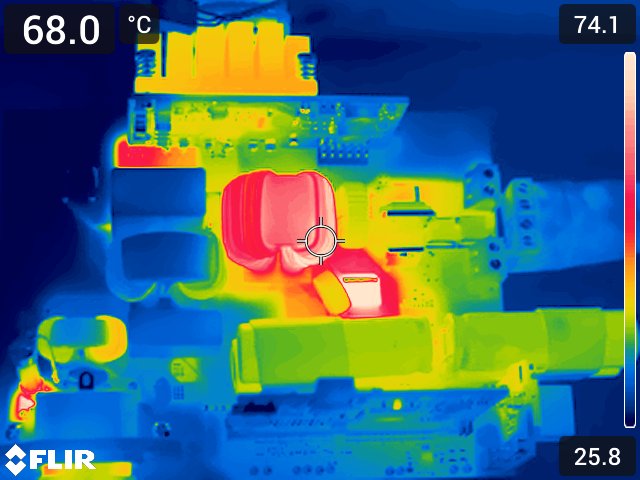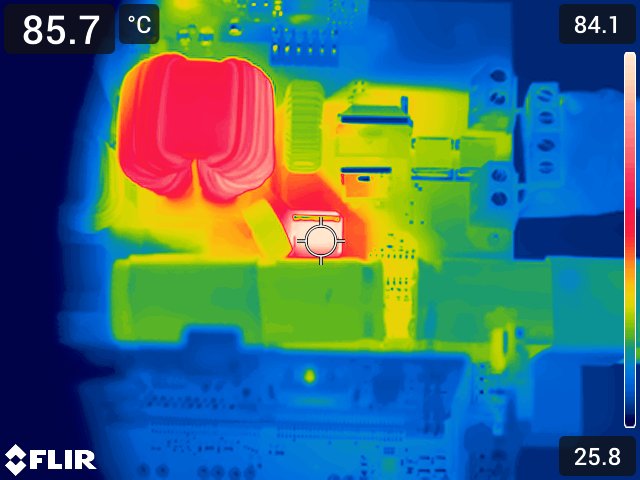TIDT369B November 2023 – July 2024
4.9 Thermal Images
Test Conditions:
Vin:230 VAC
Vout: 385V
Load: 3.6KW
Air flow: same as "Start-Up Sequence"
 Figure 4-33 Thermal Image
Figure 4-33 Thermal Image Figure 4-34 Relay Bypass Switch Thermal
Image
Figure 4-34 Relay Bypass Switch Thermal
ImageTIDT369B November 2023 – July 2024
Test Conditions:
Vin:230 VAC
Vout: 385V
Load: 3.6KW
Air flow: same as "Start-Up Sequence"
 Figure 4-33 Thermal Image
Figure 4-33 Thermal Image Figure 4-34 Relay Bypass Switch Thermal
Image
Figure 4-34 Relay Bypass Switch Thermal
Image